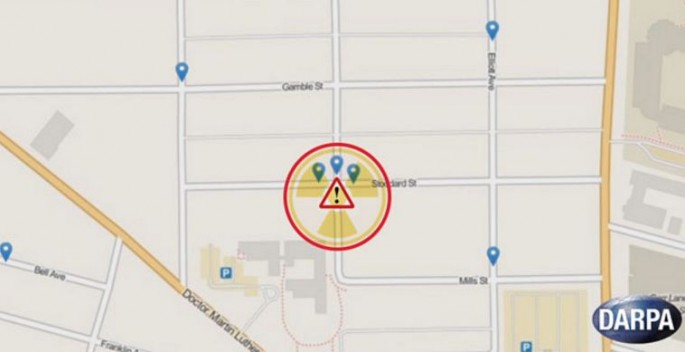The U.S. Defense Advanced Research Projects Agency (DARPA) has developed and intensively tested in the real world a network of mobile devices the size of smartphones that detect the smallest traces of radioactive materials such as those emitted by "dirty bombs."
Developed under DARPA's SIGMA program, the detectors are aimed at preventing attacks on the United States by "dirty bombs" that might be used by terrorists, and by other nuclear threats.
Combined with larger detectors along major roadways, bridges, other fixed infrastructure and in vehicles, the new networked devices promise significantly enhanced awareness of radiation sources and greater advance warning of possible threats.
A dirty bomb is not a nuclear weapon. A dirty bomb or radiological dispersal device (RDD) is a radiological weapon combining radioactive material with conventional explosives.
The weapon, which is ignited by a conventional explosive, seeks to contaminate the area around the bomb with radioactive material. It's primarily as an area denial device targeted at civilians. There is no nuclear explosion when the dirty bomb is fired.
The demonstration was conducted at major transportation hubs of the Port Authority of New York and New Jersey where DARPA tested more than 100 networked SIGMA sensors. The test with the Port Authority was the largest deployment of the sensors to date.
During the month-long test, the system provided more than a 100-fold increase in ability to locate and identify sources of radiation as compared to currently installed systems. All sources of radiation that SIGMA sensors identified were non-threatening.
The pocket-sized radiation "pager" sensors developed by DARPA and used in the exercise can be easily worn on a person's belt. They're one-tenth less expensive than conventional sensors, and are up to 10 times faster in detecting gamma and neutron radiation. The program also achieved its price goal of 10,000 pocket-sized detectors at $400 per unit.
The system proved how it could pinpoint the location and intensity of a source and specify, in each case, the type of radiation to which it was alerting authorities.
This demonstration of efficacy was part of DARPA's SIGMA program launched in 2014. SIGMA's goal is to develop a cost-effective, continuous radiation-monitoring network able to cover a large city or region.
Radiation detectors have been installed in a number of key locations in the United States and around the world. SIGMA, however, seeks to increase capabilities while lowering their costs to network an unprecedented number of advanced detectors and provide a comprehensive, dynamic and automated overview of the radiological environment.
"We are extremely pleased with SIGMA's achievements to date in advancing radiation detection technology to fit in a portable, pocket-sized form factor at a price that's a fraction of what current advanced sensors cost," said Vincent Tang, program manager in DARPA's Defense Sciences Office.
"The ability to network hundreds, and soon many thousands of these smart detectors would make cities in the United States and around the world safer against a wide variety of radiological and nuclear threats."



























